
Epidemics and monsters (plague gods, Amabie, etc.)
Hubei Province, ChinaWuhanIt started to become popular mainly incoronavirusA new type of pneumonia caused by the virus is raging.
It has been in the news that the Diamond Princess has been forced to remain anchored in Yokohama Port for an extended period of time due to quarantine.
Many cases of infection have also been confirmed in Hokkaido, with 17 as of February 22nd.
This is because Hokkaido has two testing centers, the Hokkaido Prefectural Institute of Public Health and the Sapporo Municipal Institute of Public Health. It is said that other municipalities simply do not have the necessary testing systems in place and that there are many untested infected people hiding there.
It is said that the Ministry of Health, Labor and Welfare once considered conducting tests, but decided not to do so due to concerns about the impact on operations if a large number of people tested positive.
Social impact of COVID-19
As the number of infected people increases nationwide in Japan, many companies have activated their business continuity plans (BCPs) and switched to remote work and working from home. This transition to a new way of working seems to be going smoothly, as there have been movements toward work style reform in recent years.
In addition, economic activity and everyday life are also being affected, with announcements of the cancellation of public audiences and participation in the Tokyo Marathon, as well as the cancellation or postponement of various events.
Regarding the novel coronavirus (COVID-19), the word "new" means that it is a newly identified virus, and there are concerns that it could spread in a troublesome manner as it cannot be treated with existing vaccines.
Incidentally, the SARS epidemic that occurred from 2002 to 2003 was also an epidemic caused by a new coronavirus.
SARS (Severe Acute Respiratory Syndrome) is a term that describes a condition that is severe, acute, and affects the respiratory tract. It is simply a term used to describe the phenomenon of an epidemic at a time when its true nature had not yet been identified.
In short,UFO (Unidentified Flying Object)"or"UMA (Unidentified Organism)" It has a similar name.

In Koreanew religionThere have also been cases where infections have spread among people connected toWho could have predicted that in the Reiwa era of 2020, an epidemic would spread worldwide?
In the past, people would look to gods or monsters for the cause of unknown phenomena such as epidemics.
God of plague
"plague" is also read as "ekibyogami" or "yakubyogami" and is also known as the god of plague, plague, or misfortune, and is a god believed to bring various epidemics such as cough disease, smallpox, and measles.

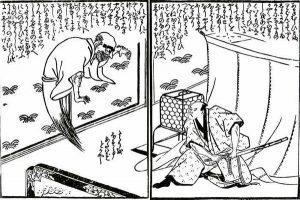
In the past, it was believed that people got sick because of invisible spiritual beings, and epidemic diseases and incurable diseases in particular were attributed to plague gods, demons, or vengeful spirits.
In ancient times, the Imperial Court held various festivals to drive away plague gods, such as the Dokyo Festival, in which the gods were entertained at the borders of the capital in advance to prevent them from entering.
Rituals to entertain and drive away plague gods are also widely held at the private level, and there are examples of people stringing up shimenawa ropes at village boundaries to prevent the incursion of plague gods.
As a repellent for epidemics,ShokiorGozu Tennou,KakudaishiThere is also a belief and popular belief that placing one indoors or on a door serves as a talisman to ward off the god of plague.

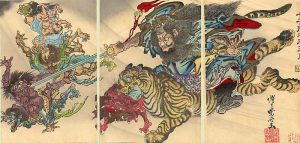
God of smallpox
"Smallpox God" is the god who governs epidemics, especially smallpox. In the past, epidemics mainly included smallpox, measles, cough disease, and dysentery, with smallpox being the most feared of all.
The smallpox god would appear in the form of a young boy, a monk, or a little old woman, and would infect people with smallpox while telling them how to recover.
Mysterious Bird・ Itsu Shinten
"Itsu Shinten” (Itsumade) is a mysterious bird mentioned in the Taiheiki.
At the end of the Kamakura period, during the turmoil of the Kenmu Restoration, many people died from an epidemic, and bodies piled up on the outskirts of the capital. At that time, the lion appeared on top of the Shishinden. Perhaps out of resentment from the sick, it cried out "until when, until when" as if pleading for the bodies to be left alone.
Amabie predicts epidemics
"Amabie" is a monster that appeared in Higo (Kumamoto Prefecture) during the Edo period and is said to have predicted the spread of epidemics. It has a mermaid-like appearance, long hair, and a bird-like beak on its face.

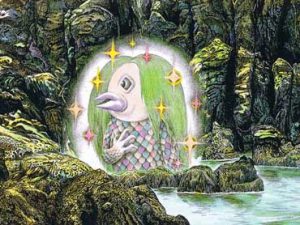
He is said to have predicted good harvests and epidemics, and said, "Show people a picture of me as soon as possible."

Demons that control epidemics in China
"demon"Onki" is a demon or monster from China. It is said to cause suffering to humans by causing epidemics and smallpox, and is also called 'Kube-no-kami', 'Kutsu-shi', or 'Ku-pe-no-kami'.
It is said that the mutoni often act in groups of five, and they are called the "Five mutons" or "Five muton messengers." In connection with prayers for protection from infectious diseases affecting livestock, the five mutoni are sometimes depicted as demons with the heads of different animals, such as a horse, cow, chicken, sheep, or rabbit.
Vampire Nointator
"Nointator" is a vampire from the Saxony region of Germany. Its name means "murderer of nine," and is said to come from the legend that it takes nine days for a corpse to turn into a vampire in the grave.
It is said to spread epidemics and to appear when an epidemic has spread. It is said that the best way to defeat this demon is to stuff a lemon into its mouth.
Other Yokai that can ward off epidemics
We have introduced some overseas examples, but in addition to the above, there are other examples in Japan,Ushioni(Ushio),KappaThere are also many cases where monsters such as these are worshiped as wards off epidemics.
Furthermore, epidemics have occurred in the capital of Kyoto since ancient times, and although they are not monsters, there are many stories, such as Rashomon, that depict the horrific scenes of such epidemics.
What we can do to combat the coronavirus
Although measures such as coronavirus vaccines are currently being developed at a rapid pace, it is expected that the infection will not be contained for at least six months to a year.
Below are some specific measures that individuals can take, as proposed by the University of Tokyo's Graduate School of Arts and Sciences, and we introduce them here for your reference.
1. Health Management
2. Use of telework and electronic tools
3. Disinfect, wash your hands, wear a mask, etc.
4. Staggered commuting times and ways to avoid crowds
5. Don't go to the hospital unnecessarily out of concern that you may have contracted a virus
6. Keep a health record
For countermeasures, please refer to the Ministry of Health, Labour and Welfare's Q&A.
Yokai knowledge to combat epidemics
I had only seen it in history and legends,The epidemic is a realityThis is what happened.
Yokai are filled with wisdom that has been passed down by people from the past.
When social unrest reaches its peak, conspiracy theories, hoaxes, and rumors begin to circulate.
To avoid being swayed by these rumors, Core knowledge, knowledge about monsters and folklore is requiredIt will be.
There is often talk about the unnecessary nature of liberal arts departments at universities, but knowledge from cultural anthropology and folklore is particularly useful in times of crisis for humanity or ethnic groups.
Learning about yokai and gaining the wisdom of people from the past will help you survive in modern society.
Image: Yellow cover "Kaidan Yosakokane", Shoki statue (painted by Kyosai Kawanabe), Amabie (Shigeru Mizuki)
References: "Selected Japanese Folklore Dictionary" (Fukuda Ajio, Yoshikawa Kobunkan), "The Definitive Japanese Yokai Encyclopedia: Yokai, the Otherworld, and Gods" (Mizuki Shigeru, Kodansha Bunko), "Japanese Yokai Encyclopedia" (Mizuki Shigeru, Murakami Kenji, Kadokawa Bunko)
Text by Keishiro Watanabe
■ Keichan Watanabe
Born in Asahikawa, Hokkaido. Graduated from the School of Human Sciences at Waseda University. An independent researcher of yokai. Certified Information Systems Auditor (CISA).
He currently works as a management and IT consultant, residing in Sapporo, Hokkaido, and traveling throughout the prefecture and Tokyo. However, he studied folklore and cultural anthropology at university, and continues to research yokai as his life's work.
I am currently writing articles about monsters associated with Hokkaido, where I currently live, as well as current news about business and economics.
Twitter:https://twitter.com/keishiro_w

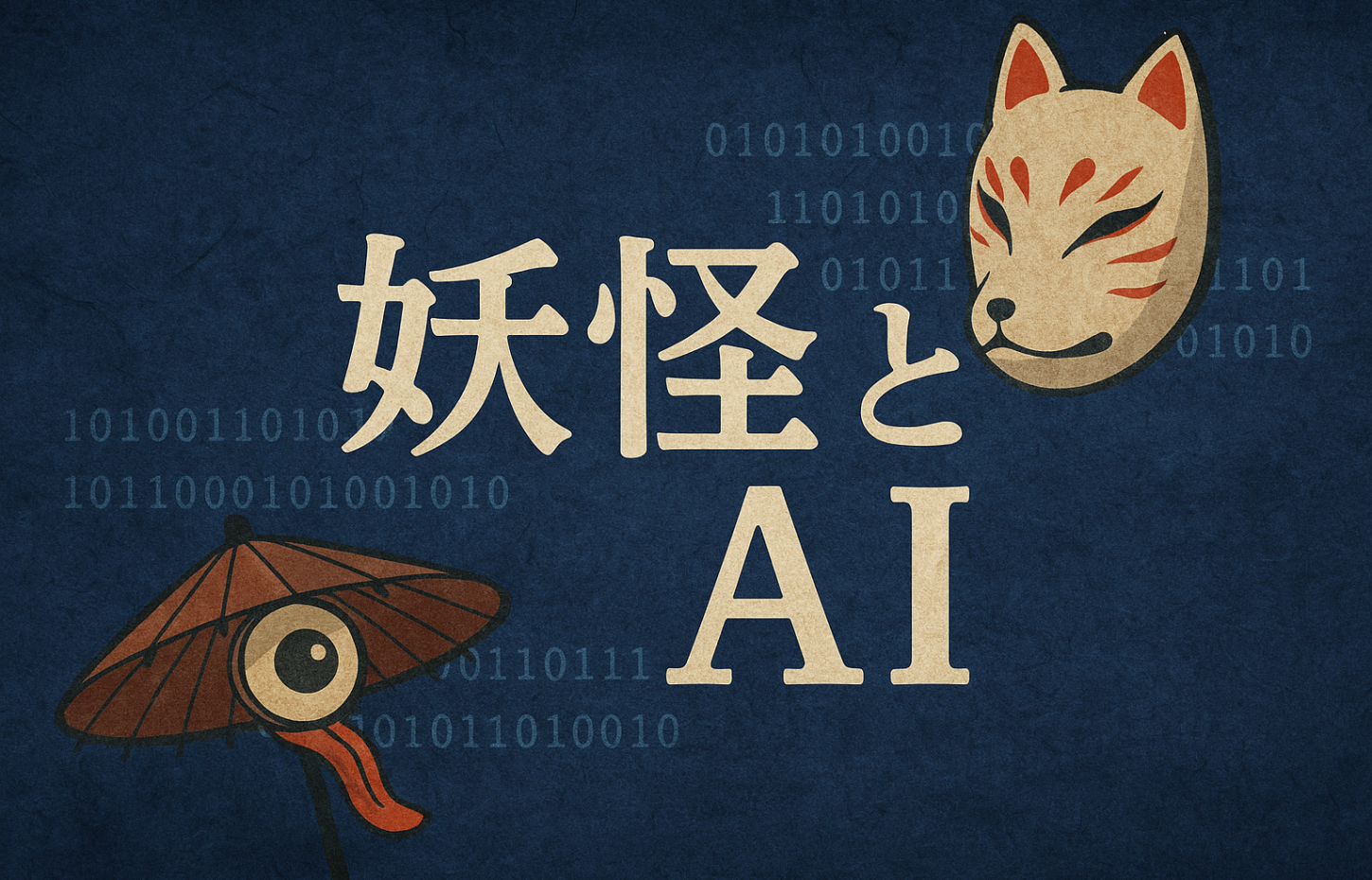
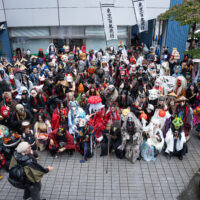
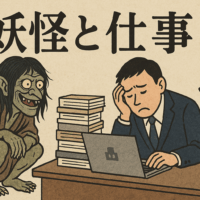
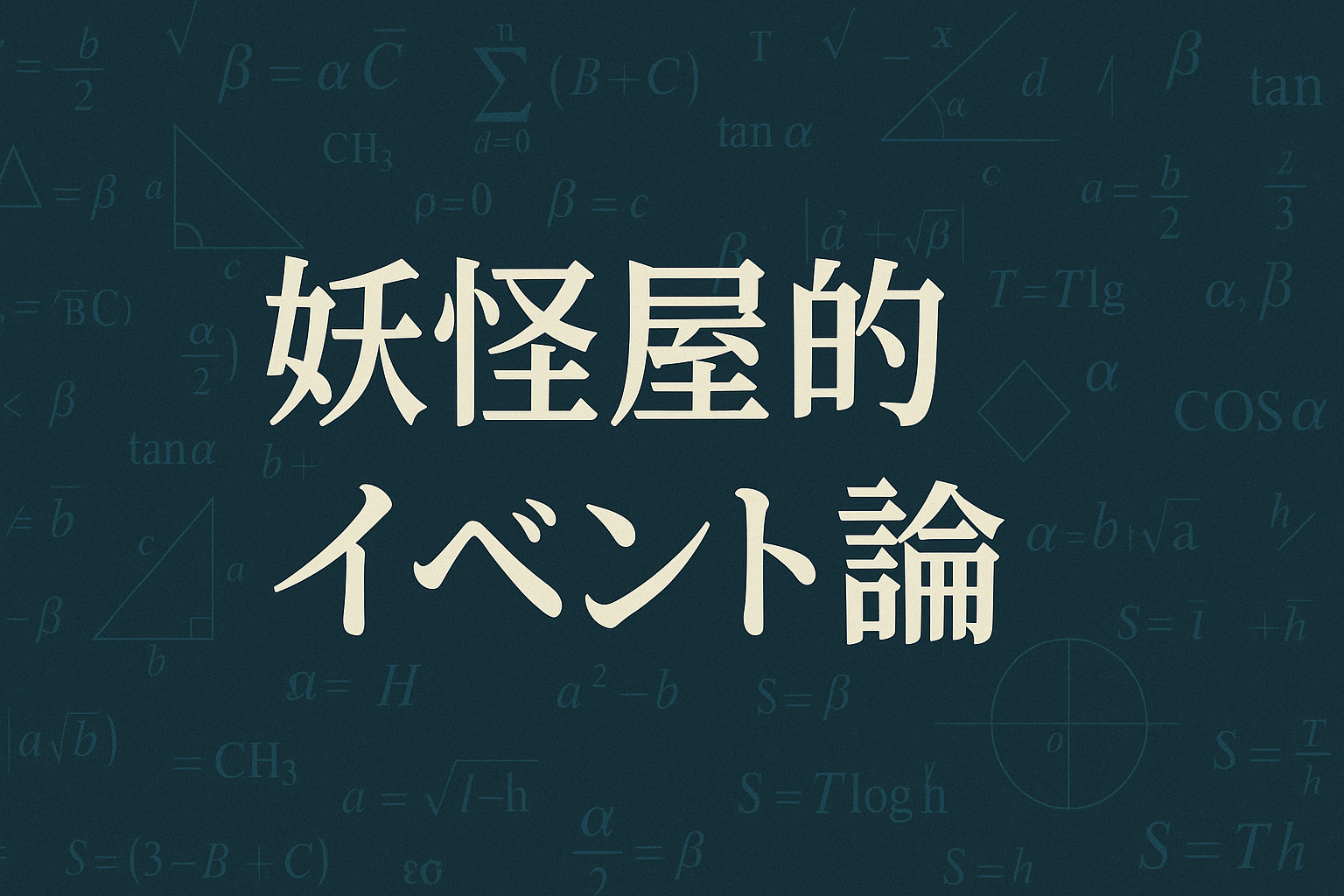



No comments yet.